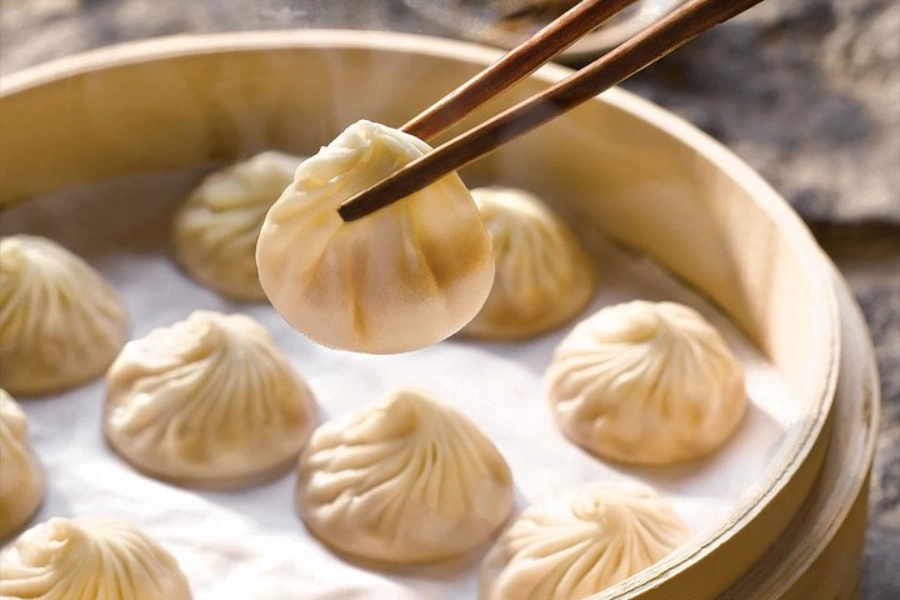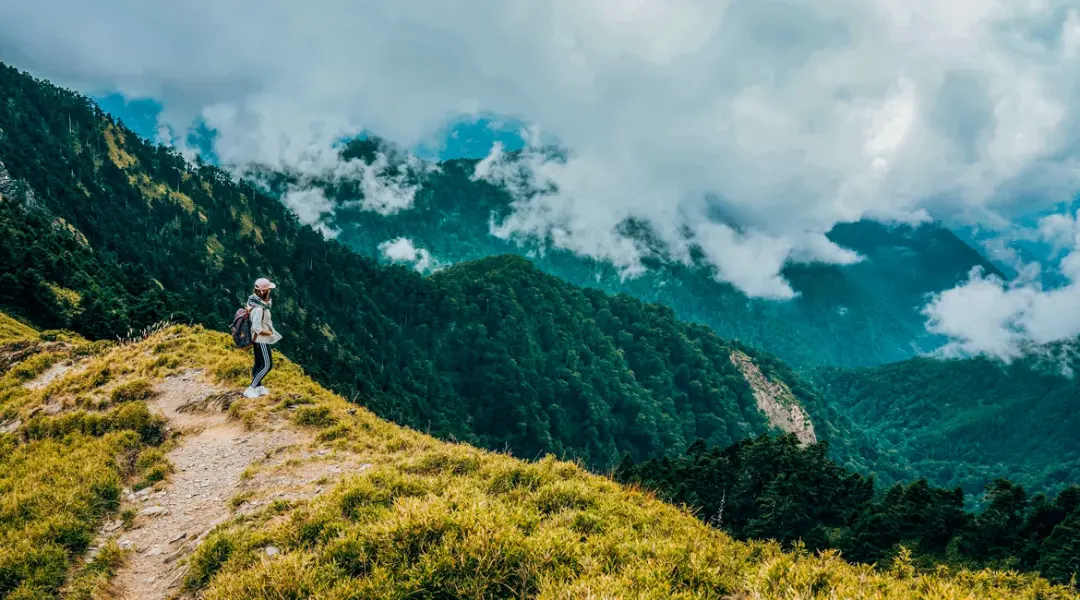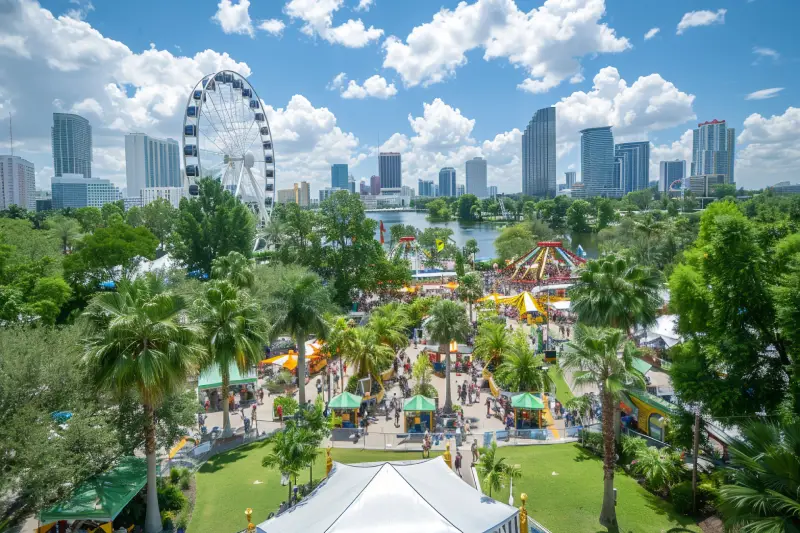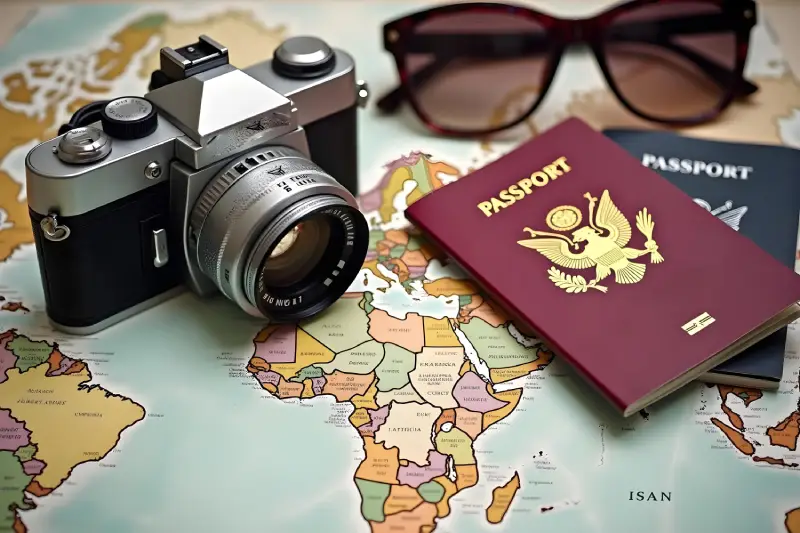10 Things to Do in Taiwan
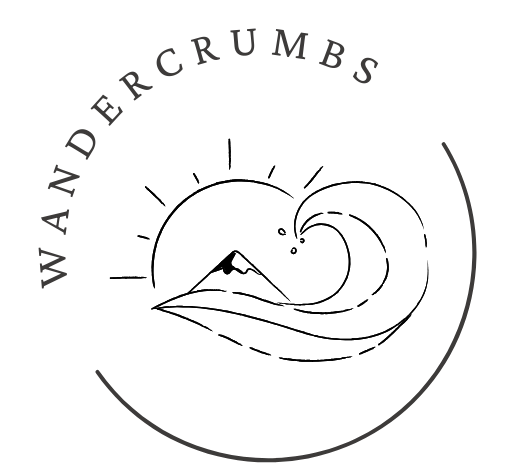

Table of Contents
ToggleEvery region in Asia is stunning. But Taiwan stands out for various factors. Taiwan was named the happiest location in East Asia. While it may be a tiny island, the variety of views and entertaining things to do around will astound you. Taiwan has stuff for all of us, including over a hundred mountain ranges above 3,000 metres.
Over a thousand hot springs strewn across the island, both solid gold and black-sand coastline. With 9 nature reserves, global exhibitions, twinkling highrises, dazzling temples, and an unrivalled number of hawker centres, it’s difficult to decide what to do with many activities. Even though we tried a hand to figure out the best. Read more to explore the activities in Taiwan.
1. Xiao long bao
Eating is Taiwan’s national hobby. Adults and children in Taiwan are significantly working and school-focused. Therefore, their lives necessitate healthful cuisine consumed on the move. Furthermore, there is always a plethora of fruits and vegetables to make your tummy full. Make a trip to the local marketplace and treat yourself to fresh and tasty food. By this Taiwan has transformed into a foodie’s paradise. The food scene is a global cornucopia of gastronomic pleasures, catering to practically every budget and lifestyle.
While there are several five-star restaurants around the country, true gastronomes frequent the night markets. They guarantee to keep your stomach satisfied while keeping your money untouched. Xiao long bao, often known as dumplings, is a popular local dish. They are constructed with a pastry bag packed with a flesh combination and a little bit of broth before being topped with raw ginseng and sauce. When you bite into one of them, your tongue explodes with flavour. Fresh xiao long bao is available from various street sellers at street markets for roughly 140 rupees for a bundle of 10-12.
2. Tianhou Temple
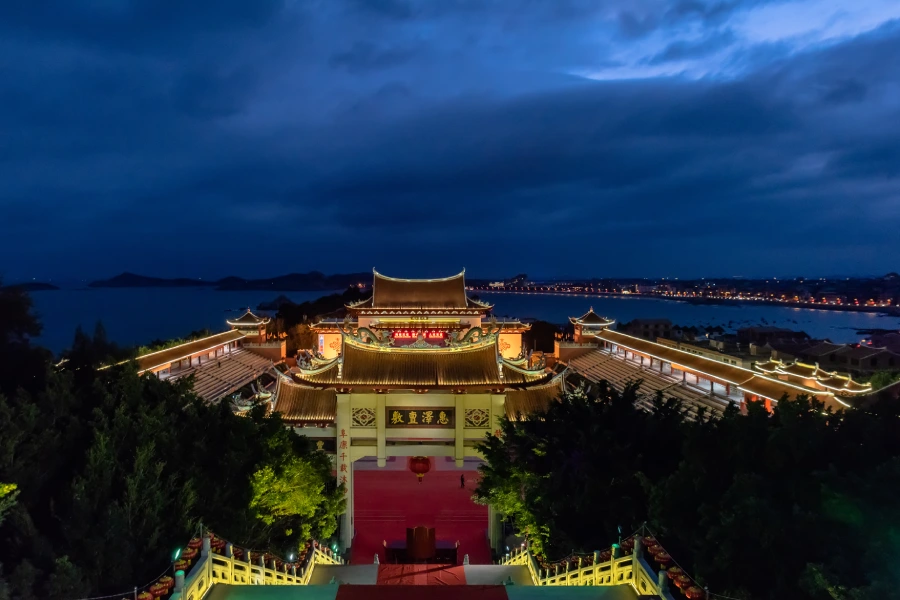
Tianhou Temple in Taipei is also known as “Ximending Mazu Temple”. The main goddess is Mazu in Tianhou temple. Pay a visit to Tianhou Temple, one of the oldest temples, goddess of the sea. Immigration merchants from Zhangzhou and Quanzhou in Fujian, China, provided grant money for the temple’s construction in 1746. This is one of three main Qing dynasty temples in Taiwan, together with Bangka Longshan Temple and Bangka Zushih Temple.
It is also Taiwan’s sole temple dedicated to the god Hongfa Dashi. Because the goddess is also extensively adored by Japanese Buddhists as “Kouhou Dashi,” the temple gets a large number of Japanese visitors. It’s on a major thoroughfare, yet the entry is easy to overlook. It’s a bizarre sensation to walk through the doors of this exquisite Taoist temple, which is packed with fantastical creatures, hazy incense, fortunate goldfish, and worshippers paying their respects to the gods. You’d never guess this peaceful haven is located in one of Taipei’s busiest districts!
3. Lantern excursions
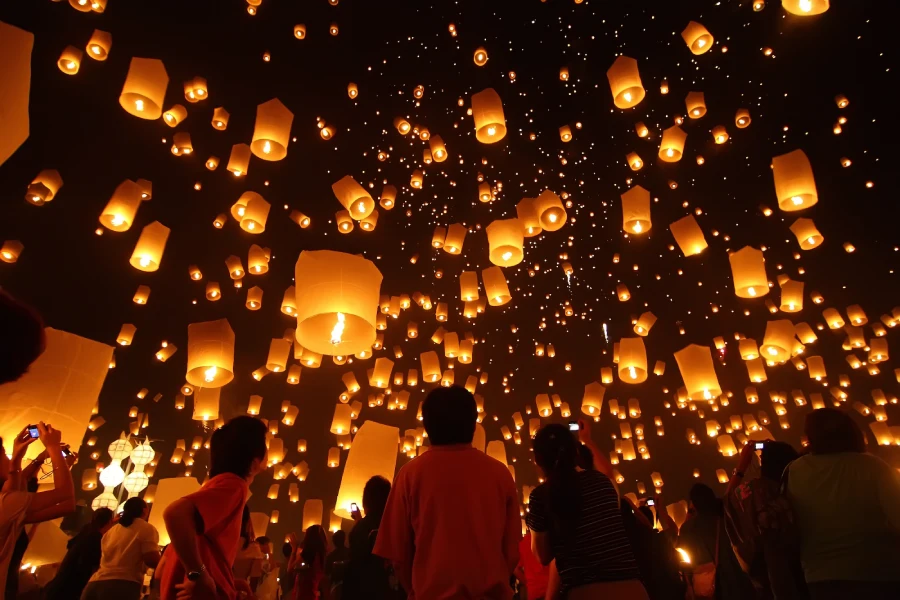
The Pingxi Lantern Celebration, one of Taiwan’s most exciting festivals, includes the release of thousands of twinkling lights in the night sky. This important custom is also a part of several couples’ weddings. You may buy a lantern and ignite it on any of Taiwan’s shores if you don’t need to battle the crowd. As Taiwan is known for its environmental sensitivity, use eco-friendly paper lanterns that dissolve without leaving a mark and do not create fires. Shifen provides biodegradable tissue lantern excursions.
It’s one of Taiwan’s most spectacular sights. Annually, thousands of Chinese people go to Pingxi for the traditional Lantern Festival. People scribble their desires on paper lanterns and toss them into the skies, hoping that their ancestors would answer their wishes. The Flying Lantern excursion is an excellent choice for visitors to Shifen Old Street since it combines this sight with Jiufen’s Old Street for a magnificent view into Taiwan in the era. The festival’s official event is February 15, upon which all lanterns will be distributed. Nonetheless, night markets and sky lantern installations will remain for up to two weeks.
4. Museum

The National Imperial Palace Museum, possibly the most significant art gallery in China, is a must-see. It’s in Shilin, in a delightfully green environment, and it has a lovely garden landscape. The great bulk of the items originated in Beijing’s Imperial City. After the Civil War, the Chinese Communist Party government relocated to Taiwan. The massive building is home to 700,000 objects. If you purchase your online booking, it includes accessibility to the National Palace in Chiayi.
Purchasing this combination ticket will save you cash. The Museum of Art and the Taipei Fine Arts Gallery are must-sees for art lovers. Probably visit the Land Bank Art Gallery of the National Taiwan Museum, which has a dinosaur show, if travelling to Taipei with children. The Taipei Endless Fun Ticket includes the right of entry to several art galleries in Taipei.
5. Fisherman’s Wharf
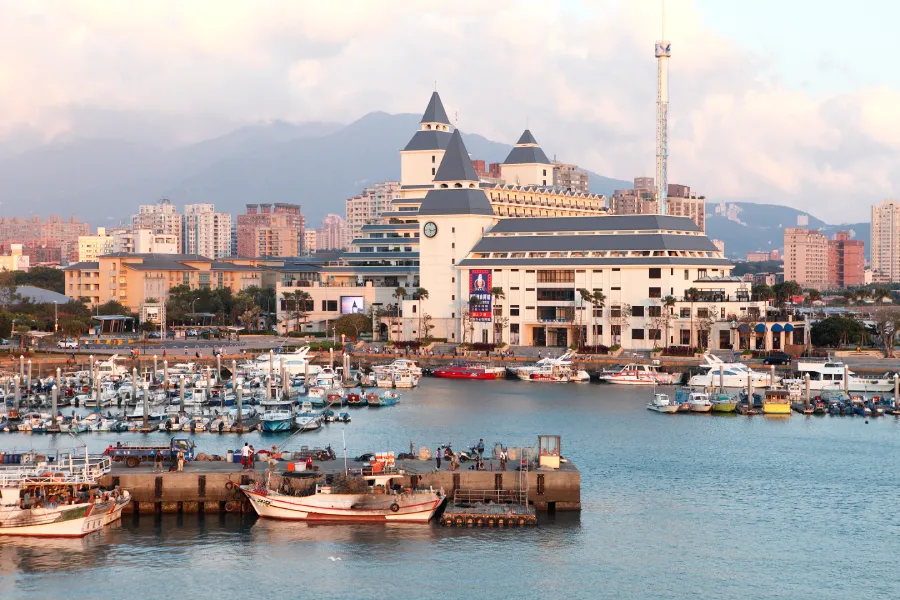
Danshui is an area featuring a central riverfront promenade near the Taipei MRT red line’s endpoint. The Danshui River, which runs across Taipei, meets the sea in this magnificent area. The path is dotted with food vendors and kid’s games, and it assumes the atmosphere of a beach street market in the afternoon. Danshui also has some historical attractions, such as the Fort Saint Domingue at the Tamsui Historical Society.
The Taipei Ultimate Fun Pass includes admission. Take a riverside boat to Fisherman’s Wharf, a wide wharf noted for enjoying some of Taipei’s spectacular sunsets. The 9-stop Pingxi small railway line connects Taipei to several beautiful mountain communities where you may have a delightful day excursion as well as some fantastic hiking. The first station is Ruifang, which has links to Taipei. In this complete guide on going from Taipei to Shifen. Houtong, often known as “the Cat Village” by locals, is another one of those unique-to-Taiwan destinations.
a. Houtong “cat” village
Houtong, once a mining operations village, is now known for its 100+ domestic cats. It all started in 2008 when a local cat enthusiast began caring for stray cats. Visitors may now purchase cat-themed merchandise, food, and beverages, as well as pet and photograph a large number of cats. The tiny settlement may be found on each side of the Houtong subway station, with a cat dorsal fin tunnel linking. The terminal also serves as the next visit on the Pingxi railway route before it turns inland.
b. Sandiaoling
At Sandiaoling, the little train line diverges off the major coast road beyond Houtong. To discover my favourite simple walk in Taiwan, get off this stop. The walk passes by many towering waterfalls, the latter of which has a cavern behind it. Shifen, the fifth destination, is known for the Shifen cascade, the country’s largest and dubbed the “Niagara Falls of Taiwan.” The tiny railway station has a unique atmosphere and is quite popular with tourists. Pingxi, the eighth destination, is well-known in Taiwan as the location of the yearly Pingxi Mass Sky Lantern Launch, one of the country’s most famous events. Pingxi Station also has accessibility to the Pingxi Crags.
6. Ascend vertical crags
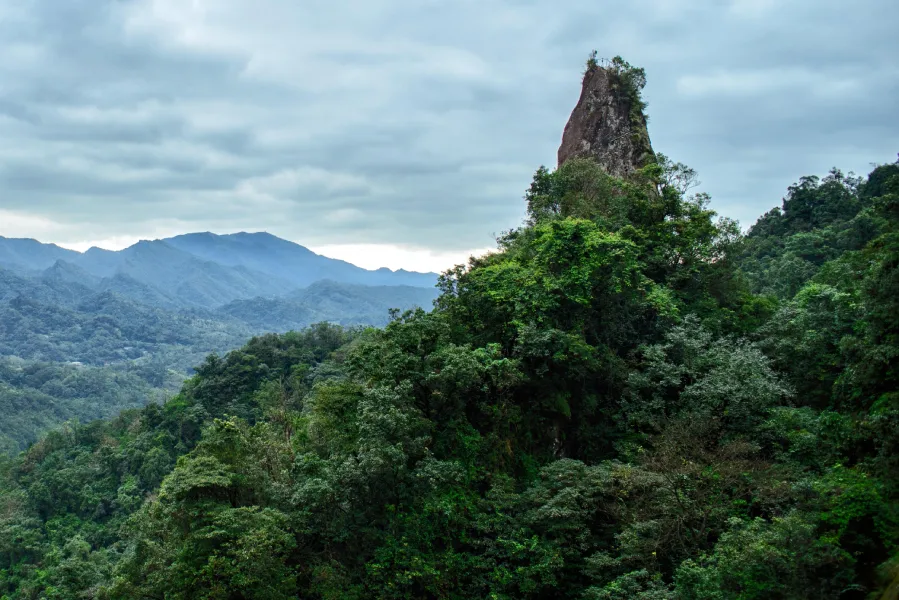
Hikers will love Taiwan overall, but three walks in the Greater Taipei region rise out if you’re seeking a challenge. Even though they appear to be difficult, they are all doable for anyone reasonably fit. The Pingxi Crags, a set of paths that go to a group of sheer vertical crags, is the first. The uphill climbs are equipped with harnesses and staircases. Making them relatively safe.
The second trek, Huangdi Dian in Shiding Prefecture, is more complicated. It entails a long uphill struggle before reaching the top, a beautiful and wonderfully magnificent ridge walk. Wuliaojian route in the Sanxia district is the third and possibly best of the group, including rope bridges, bluffs, ridges, vistas, and reasonably much else that can make a hike fantastic and exciting. It’s a bit difficult mentally, more than physically, if you dare to look down, and anyone in reasonable shape can accomplish it. Try cliff jumping or mountain climbing in Longdong on the Northeastern Coast for a further fantastic adventure.
7. Hehuanshan
Although Taiwan is a tropical nation teetering on low in the south due to the Tropic of Cancer running directly through it, snow can be seen on the Inner Mountains Range’s mountain peaks in the wintertime. Hehuan Peak is the greatest attraction for this. If snow is forecast typically in January or February, Taiwanese go to the hill to witness it, clogging Highway 14, Taiwan’s tallest automotive pass at 3275 metres. In Hehuanshan, there are 6 major treks, providing something for everyone’s skill level, from a simple half-hour hill stroll to a strenuous all-day trip. Because several of the mountains are close together, it is possible to trek everyone in a short period of time.
You’ll have to stay for at least a couple of nights to explore and enjoy each and everything in Hehuanshan. An additional option is a 2-day organised walk on Hehuanshan or this solo excursion from Taichung. You can even trek in snow from the top of the mountain to the bottom. Taipingshan in Yilan is a perfect spot for trekking, and snow has even landed on Yangmingshan near Taipei in the seasonal months!
8. Hakka culture
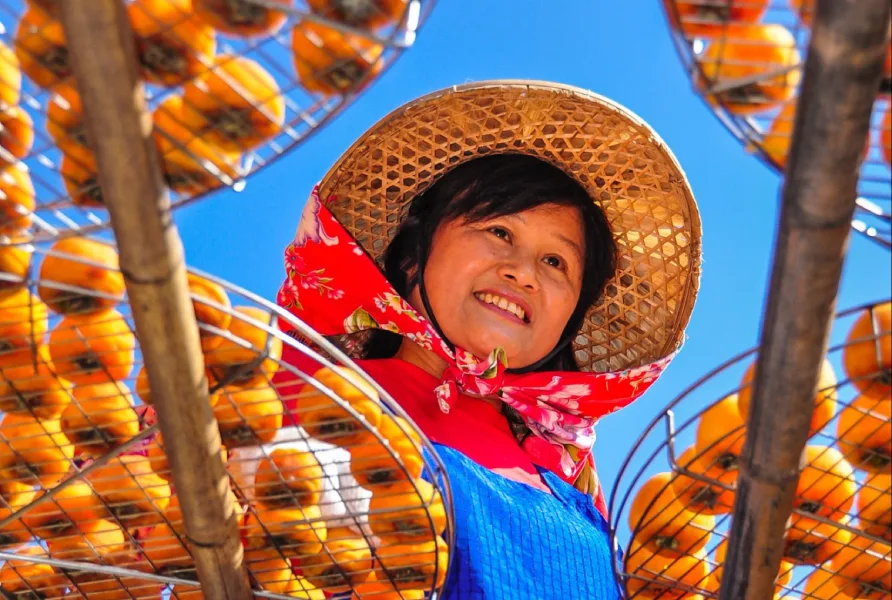
A significant number of Hakka people came to Taiwan from southern China, and they now make up about 15% of the population. Prepared to be caressed by the forested hills, covered in Tung blossoms, and immersed in Hakka artistry if you attend the Hakka Tung Blooming Festival. These rites evolved into a distinct sort of belief for the Hakka people. Yimin Ye was elevated to the status of a Taiwanese deity. The Hakka are renowned for hard work and having time to rest and reside in mountainous or rural places.
The Neiwan Old Street in Hsinchu is a fantastic spot to get a flavour of Hakka culture, with local delicacies including mochi, spicy lily-flavoured sticky rice, and lei cha or Hakka pounding tea. Beipu is yet another well-known Hakka city with a fascinating Old Street. The Hakka Circle House is a wonderfully maintained Hakka siheyuan in Miaoli. The Hakka Court is a typical Hakka fortified hamlet three-sided southern Chinese courtyard. Lastly, Nanzhuang, a Hakka town, is known for its sweet osmanthus-flavoured delicacies like shaved ice.
9. Fo Guang Shan monastery
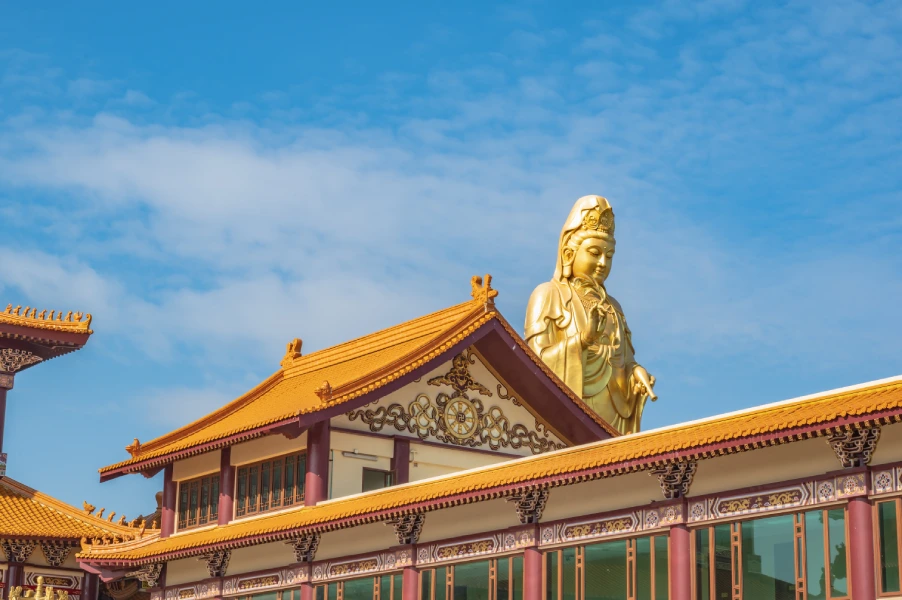
Fo Guang Shan is one of Taiwan’s five important Buddhist groups, and its massive premises are approximately 30 minutes’ ride east of Kaohsiung’s city centre. It is Taiwan’s biggest monastery compound, spanning over 130 acres of land. The ancient monastery structure is massive, including thousands or even millions of Buddha sculptures. Guests can even stay the night at the Pilgrim’s lodging. It includes a Buddhist dental relic and the biggest Buddha sculpture in Taiwan at 108 metres, which was added in 2011.
10. Penghu’s houses

The windswept archipelago of Penghu is located in the Strait, almost midway between Taiwan island and China, and is home to a heavy proportion of monasteries as well as some of Taiwan’s most picturesque and lonely beaches. Due to a paucity of construction supplies in Penghu, which is arid and desert-like in areas, inhabitants integrated elements from the ocean into their buildings, such as corallite, and shells can be seen in the concrete barriers of many residences. The Erkan Old Homes on Hsiyu Island is a perfect spot to view this since homeowners have built up cafés and businesses in their houses.
Conclusion
Taiwan is such an appealing place that you can always happily spend weeks there and never get bored. In Taiwan, there is no distinguishing rising or falling travel season. Frequently the number of tourists changes from extreme high to extreme low based on many factors such as politics, nature, food, and many others. On the other hand, each season and climate has a set of things to enjoy in Taiwan.
From beaches to high mountain places there are many to enjoy. Many aspects of Taiwan make it a wonderful place to enjoy living and touring. People often say that Taiwan is extremely advanced. You should definitely consider the above-listed things whenever you plan a tour to Taiwan. Although to some extent, there are always plenty of traditional Taiwanese pleasures to be obtained!
Author
Book your fondest memory here
Popular Posts
Must-Visit Attractions in Florida
The Sunshine State, Florida! Its stunning beaches, warm, welcoming climate,…
Exploring Denver’s Craft Beer Scene
If there’s one thing Denverites know how to do, it’s…
Do I Need a Passport to Go to Hawaii?
Hawaii, also known as the “Paradise on Earth,” is a…
Categories
- Best Places (20)
- Destinations (20)
- Experiences (21)
- Photography (1)
- Travel (48)
- Travel Products (7)
- Trip Style (8)
Search With Tags
Join Our Newsletter
Get Your Daily
Dose
Of Travel Inspiration
"*" indicates required fields
